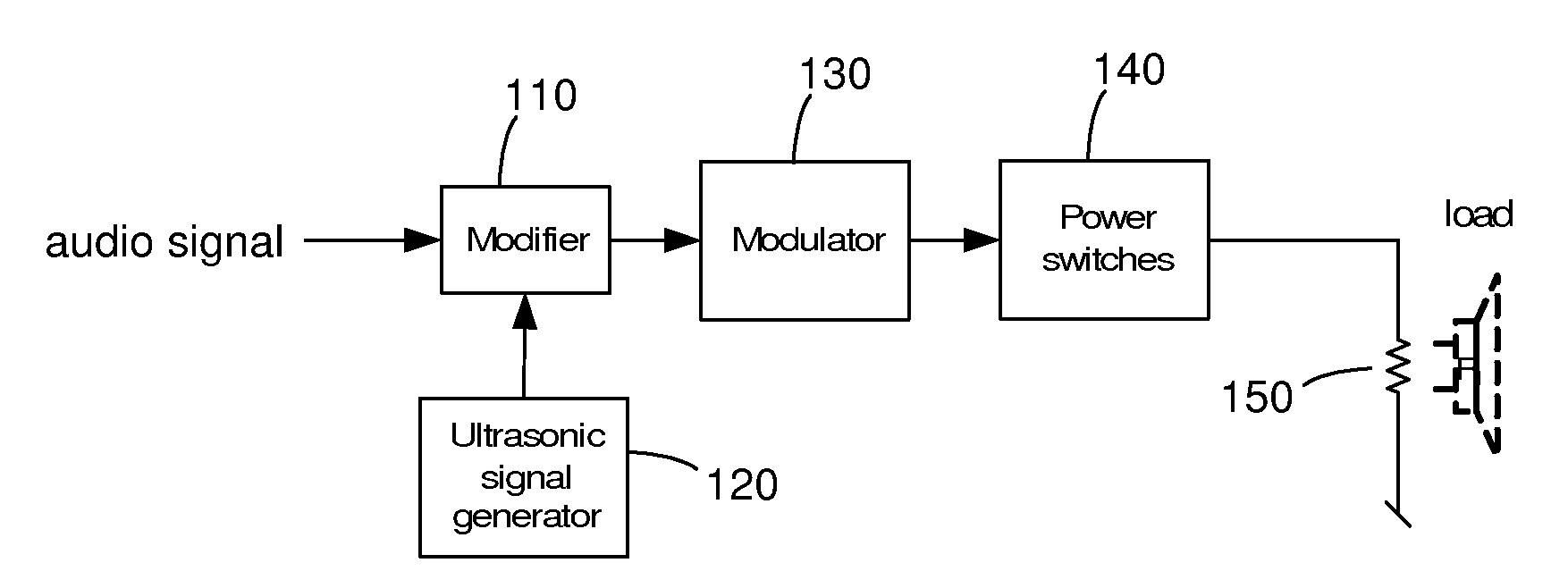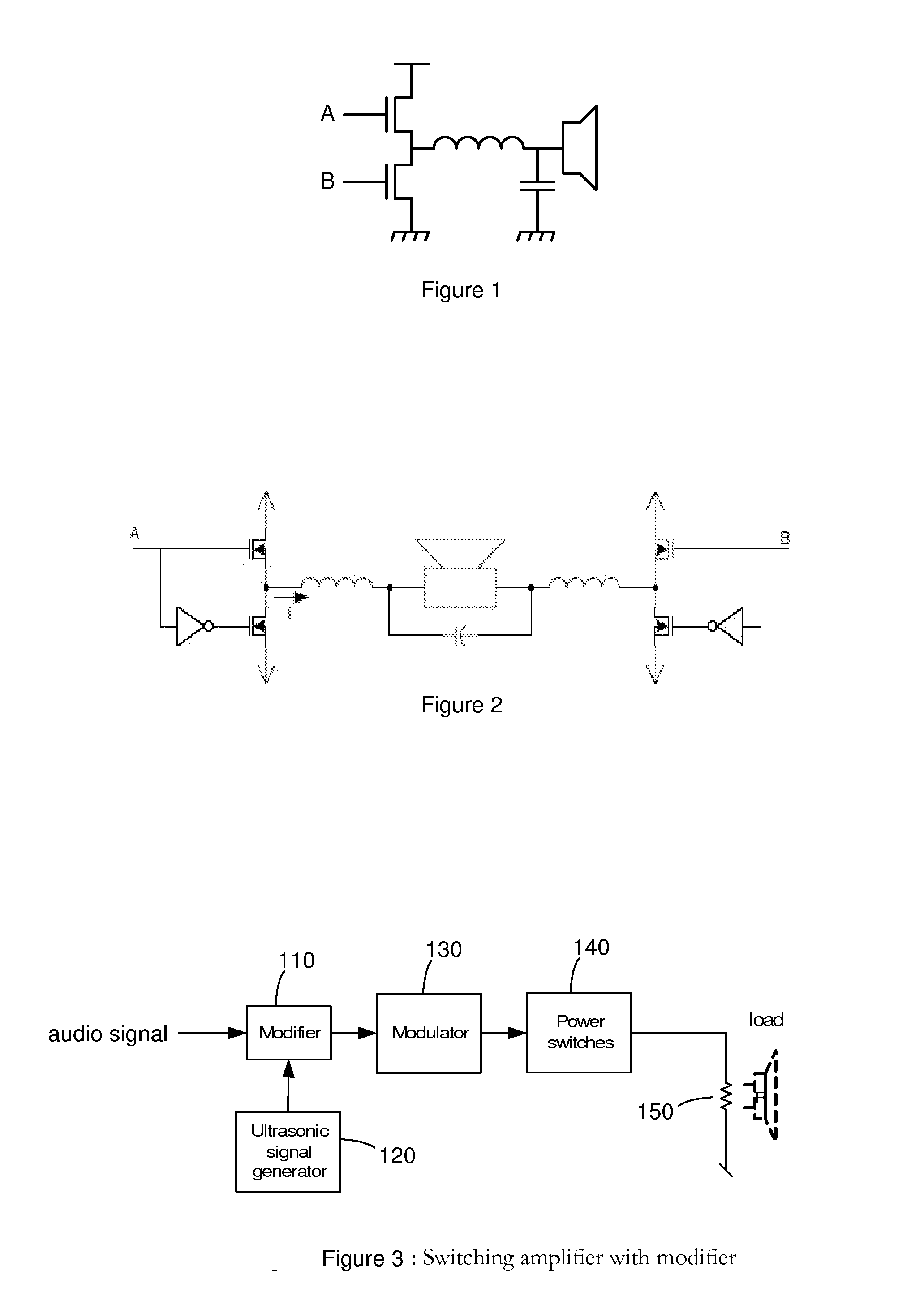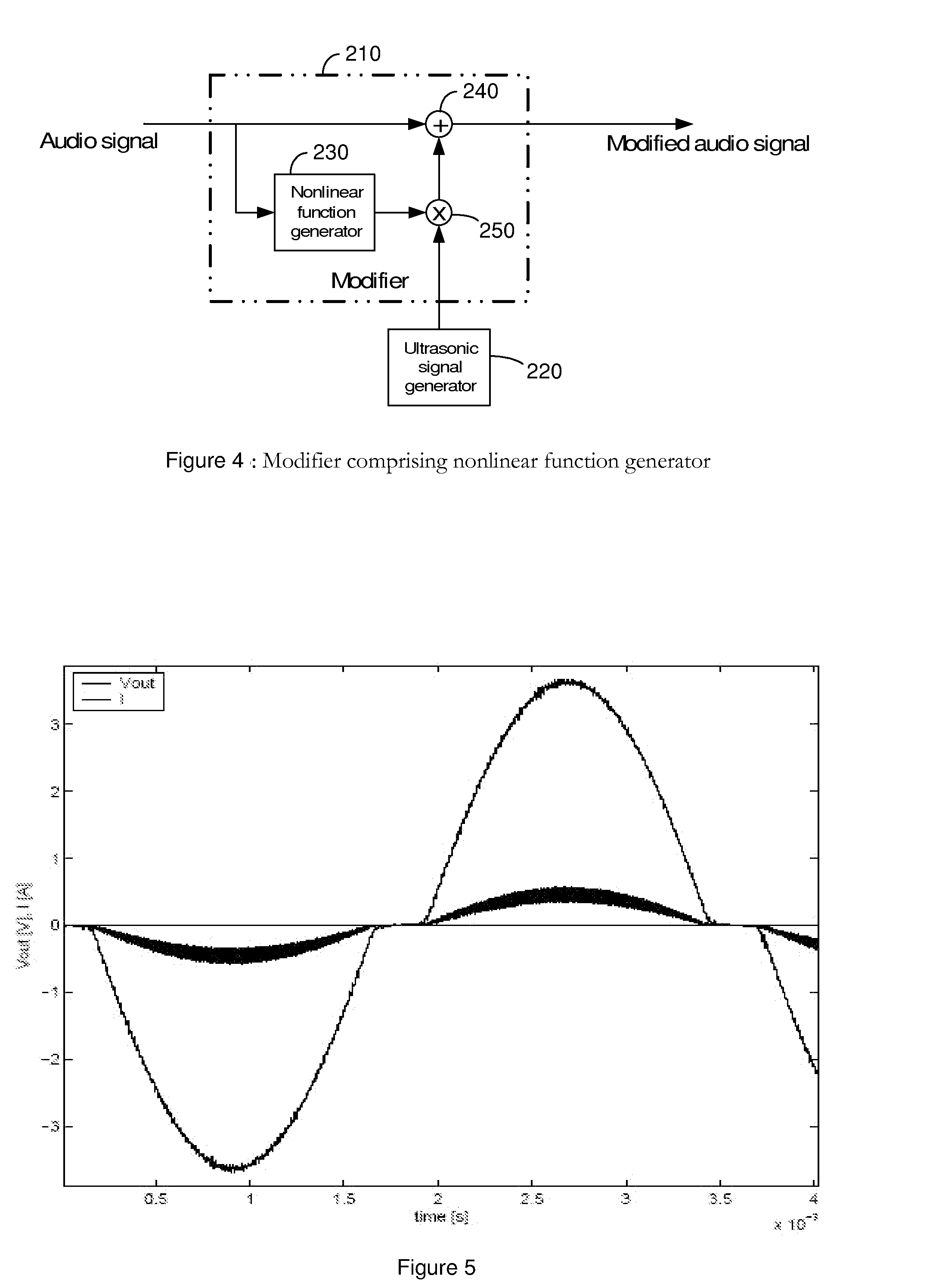Systems and Methods for Improving Performance in a Digital Amplifier by Adding an Ultrasonic Signal to an Input Audio Signal
a technology of ultrasonic signal and digital amplifier, which is applied in the field of electronic devices, can solve problems such as coincidence distortion, achieve the effects of reducing signal level, eliminating dead time distortion, and improving the performance of switching amplifiers
- Summary
- Abstract
- Description
- Claims
- Application Information
AI Technical Summary
Benefits of technology
Problems solved by technology
Method used
Image
Examples
Embodiment Construction
[0033]One or more embodiments of the invention are described below. It should be noted that these and any other embodiments described below are exemplary and are intended to be illustrative of the invention rather than limiting.
[0034]As described herein, various embodiments of the invention comprise systems and methods in which a tone (e.g., at half of the switching frequency, Fswitch) is introduced into the audio signal of a switching amplifier. The added tone shifts the signals (A, B) input to the power switches so that they do not switch nearly simultaneously, and it causes the output current to be well defined to eliminate dead time distortion at low signal levels. Adding the tone at Fswitch / 2 causes the distortion to shift to an amplitude greater than zero. Signals that exceed this amplitude will experience the distortion, but the distortion will be less noticeable than in lower-amplitude signals. Signals that do not exceed this amplitude will not experience the distortion at a...
PUM
 Login to View More
Login to View More Abstract
Description
Claims
Application Information
 Login to View More
Login to View More - R&D
- Intellectual Property
- Life Sciences
- Materials
- Tech Scout
- Unparalleled Data Quality
- Higher Quality Content
- 60% Fewer Hallucinations
Browse by: Latest US Patents, China's latest patents, Technical Efficacy Thesaurus, Application Domain, Technology Topic, Popular Technical Reports.
© 2025 PatSnap. All rights reserved.Legal|Privacy policy|Modern Slavery Act Transparency Statement|Sitemap|About US| Contact US: help@patsnap.com



